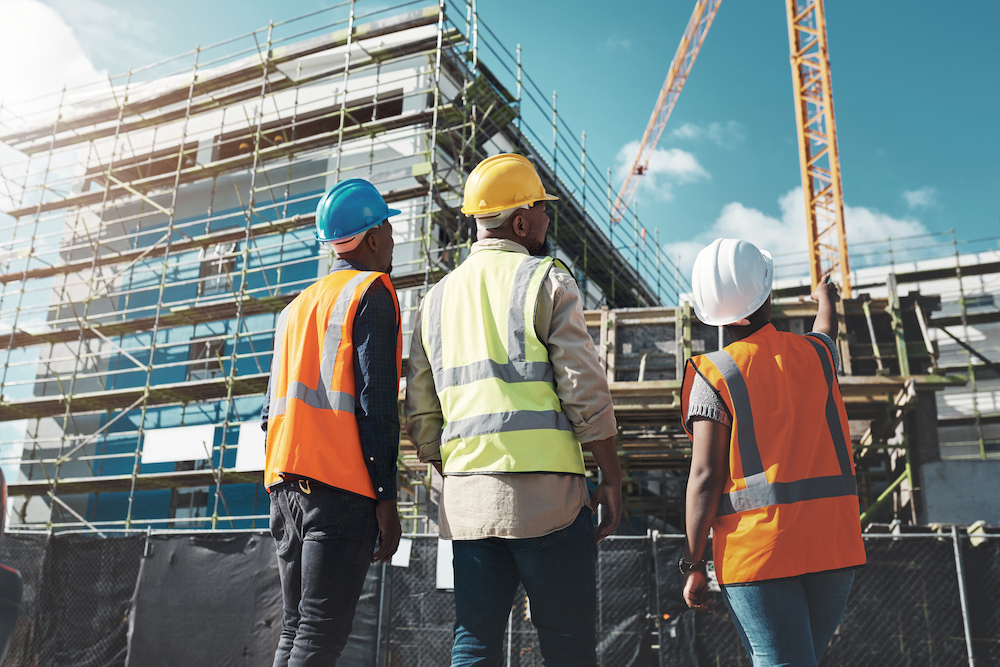Construction Safety Hazards and How to Address Them

Spring is sprung, the grass is riz, but what about the construction biz?
Even though construction is ongoing throughout the year, springtime marks the start of the busiest period for the industry as a whole. Roadwork, excavation, erecting buildings and other outdoor work have all been on hiatus, or at least cut back, through the winter months just waiting to ramp up as soon as the weather allows. With this increase in productivity is an increase in risk of injury or accident on the jobsite. Now is the time to start reviewing safety hazards and educating your workforce on how to avoid workplace incidents.
There are several common construction safety hazards that workers may face on construction sites. Here are a few examples:
- Falls: Construction workers often work at heights, which can lead to falls. These can occur from ladders, scaffolding, roofs, or other elevated surfaces.
- Electrical hazards: Workers may come into contact with live electrical wires or equipment, which can cause electrical shock or electrocution.
- Struck-by hazards: Workers may be struck by falling objects, such as tools, materials, or debris. They may also be struck by moving vehicles or equipment.
- Caught-in or between hazards: Workers may become caught in or between machinery, equipment, or structures. This can result in crushing injuries, amputations, or even death.
- Hazardous materials: Construction workers may be exposed to hazardous materials, such as chemicals, asbestos, insulations or lead. This can cause respiratory problems, skin irritation, or other health issues.
- Heat stress: Workers may be exposed to extreme temperatures, which can lead to heat exhaustion, heat stroke, or other heat-related illnesses.
- Noise: Construction sites can be very loud, which can lead to hearing loss or other hearing problems over time.
- Ergonomic hazards: Construction work often involves repetitive motions, heavy lifting, and awkward postures, which can lead to musculoskeletal injuries.
It’s important for employers to take steps to identify and address these hazards to keep their workers safe. This may involve providing personal protective equipment (PPE), implementing or reviewing safety protocols, and providing training or retraining to workers.
Here are some examples of actions employers can take to reduce the chance of a workplace accident or injury before, during and after a job begins:
- Conduct hazard assessments: Employers should regularly assess the worksite to identify potential hazards and take steps to mitigate them.
- Provide training and education: Employers should provide safety training to workers on the hazards they may encounter on the job and how to avoid them. Training should include the proper use of personal protective equipment (PPE). Employers should educate workers about the signs of heat exhaustion in themselves and others
- Use engineering controls: Employers should implement engineering controls to eliminate or minimize hazards. Such as installing guardrails on elevated surfaces, using equipment with safety features, and implementing ventilation systems to reduce exposure to hazardous materials.
- Provide appropriate PPE and Comfort Break Amentities: Employers should provide workers with appropriate PPE to protect them from hazards, such as hard hats, hearing protection, safety glasses, gloves, and respirators. Employers should also establish places to take shade during breaks, as well as ensure that plenty of water, sunscreen and bug spray is readily available.
- Establish safety protocols: Employers should establish safety protocols for workers to follow. Such as proper use of equipment, procedures for handling hazardous materials, and guidelines for working at heights.
- Regularly inspect equipment: Employers should regularly inspect and maintain equipment to ensure that it is safe for use.
- Encourage worker participation: Employers should encourage workers to report hazards and safety concerns and provide feedback on safety protocols to continuously improve safety. Promote a culture of: “If you see something, say something.”
- Enforce compliance and address complacency: Employers need to be cognizant of workers taking shortcuts or not following procedures. It must be brought to the workers attention as soon as possible. Read more here.
By taking these steps, employers can help mitigate the risks of construction safety hazards and create a safer workplace for their workers.
If you’re interested in more information on construction safety, you can check out Building Safer: Foundations of Effective Injury Prevention and Wellness for Construction Workers. A free webinar put together by Dorn companies, Avetta and Health + Safety Magazine.
As always, we’re here to help! If you want to make sure your organization is doing everything possible to ensure the safety of your workers, you can contact us directly during business hours using our live chat feature or by phone at 1-844-377-9545, email us at [email protected] or at [email protected], or you can always connect with us on our Facebook page, through our Twitter account, on our LinkedIn profile.



